Washing and drying your clothes is necessary for everyone, unless you don’t mind walking around smelly and dirty. Most people will end up doing a load of washing at least a couple of times a week, so having a good washing machine and a good dryer is crucial. But one can do it all!
That’s the basic logic behind ‘washer dryer combos’, which supposedly offer the practicality of a washing machine and the convenience of a clothes dryer. But are they as good as they sound?
We’ve done some digging to see if they’re really worth the money, and what you should be looking for if you decide to buy one. The idea of combining your washing machine and clothes dryer into one handy unit seems like a no brainer. But is it really that simple?
A Guide to Washer Dryer Combos: How Do They Work? In this article we cover:
- What are washer dryer machines?
- Why buy a washer dryer combo?
- What do they cost?
- How big are they?
- Who are washer dryers suited to?
- How energy efficient are they?
- Who sells them?
- Features you should look for in washer dryers
- Pros and cons
What are washer dryer machines?
A washer dryer machine – also known as a washer dryer combo – is a front loader washing machine and a condenser clothes dryer combined into one convenient appliance. A condenser dryer is a dryer that recycles dry air rather than venting it outside, while a front loader washing machine is simply a washing machine that opens from the front, rather than the top.
You can use these machines just like you would a normal washing machine, but with the added benefit of drying your clothes once the washing cycle has finished. In some machines, you also have the option to set it to wash and dry your clothes all in the one cycle, without needing to do anything in-between. You can go out for two hours and come home to washed and dried clothes. Sound perfect!
Why buy a washer dryer combo?
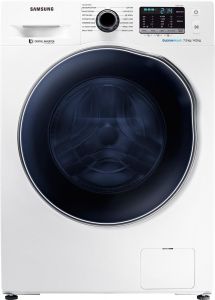
One of the main reasons people buy washer dryer combos is to save space. One washer dryer is roughly the same size as a standard washer or dryer, separately, so having two machines rolled into one can save a significant amount of space in your laundry room. Another reason is to save money. Washer dryers are quite expensive to buy, but will generally cost less than buying two separate appliances. We cover the cost aspect of buying a washer dryer combo later.
However, the main reason people buy washer dryer combos is simply their convenience. The ability to both wash and dry your clothes in the same machine is a huge draw for many. Add this benefit to the fact that they give quick and solid results, and you’ve got a machine that you should really consider buying.
How much do washer dryer machines cost?
A standard electric standalone washer or dryer will usually set you back around $500, which is very cheap for a machine that is supposed to last you around 10 years. Comparatively, washer dryer machines tend to be a bit more expensive.
The prices of washer dryer combos in NZ range from a low of around $850 – to a high of more than $5,000 for the more luxurious models. So they cost a fair bit more, but that’s kind of the point, isn’t it? You’re buying one appliance to do two jobs. The question is: are they worth it?
How big are washer dryer machines?
Washer dryers tend to be around the same size as a standard front loader washing machine or clothes dryer, about 63-89cm wide and 89-114cm tall. However, what you really need to consider is the load capacity.
| Washer capacity | Suits |
|---|---|
| 6kg-7.5kg | 2-4 people |
| 7.5kg + | 4+ people |
General guide only
The capacity in kilograms you can see here refers to the weight of dry clothes, not wet clothes, since wet clothes take on extra weight. You should try to put slightly less than this capacity into your washer just in case your machine overloads during the washing cycle. We recommend that you always read the product information closely to ensure you have the right sized machine for your requirements.
You’ll also need to make sure the washer dryer actually fits in your laundry or designated space. Bust out that tape measure and carefully measure the space where your new machine will go to the nearest millimetre. Leave about 8cm or so on each side, particularly at the back, to make room for the wires and pipes.

Who are washer dryers suited to?
Because of their smaller capacity (the drying component typically holds about half the capacity of the washer), washer dryer combos are ideally suited to small households, or to people who live in small units or apartments, where space is at a premium.
Combo machines work best with relatively small washing loads, which is why they tend to be unsuitable for large families that use their washing machine and dryer quite a lot. This is mainly because they aren’t designed to handle large drying loads, and because you can’t do a second load of washing while the first is in the dryer. If your laundry needs are more significant, you’d probably be better off buying your washing machine and dryer separately.
How energy efficient are washer dryers?
There are two kinds of washer driers: vented and ventless. We’ve already discussed what ventless (condenser) dryers are – they recycle the warm air they use rather than releasing it outside. Ventless machines are almost always more energy efficient than vented ones, which is balanced by their more expensive price tags.
When it comes to overall efficiency, studies have found that combo machines are better than the two machines working separately. The enhanced efficiency of combo units is down to their reduced hot water usage and washer mechanics. Many models come with spin cycles of more than 1000 rotations per minute, which helps to hasten drying.
So while they lack the sheer energy saving prowess of individual drying machines like heat pump dryers, which can save 50% more energy than standard dryers, combo dryers will save you a decent amount over time.
Just make sure that you look for a high energy star rating, to ensure your machine is not an energy guzzler. A standard family of four using a standard combo machine can save roughly $100 a year if used correctly.
Washer driers can burn through power, especially on hot washes. And where electricity use is concerned, it always pays to check whether you’re getting the best deal. If you can switch to using your washer dryer at a certain time of the day, why not swap to a provider that offers a free hour of power each day? Your savings could be considerable. To make choosing the best electricity provider easier, Canstar compares them on value and service.
Canstar Blue’s latest review of NZ power companies compares them on customer satisfaction. The table below is an abridged version of our full results, available here.
^ By clicking on a brand or 'details' button, you will leave Canstar Blue and be taken to either a product provider website or a Canstar Blue NZ brand page. You agree that Canstar Blue NZ’s terms and conditions apply (without limitation) to your use of this service,to any referral to a product provider from our website, and any transaction that follows. Canstar Blue may earn a fee for referrals from its website tables, and from sponsorship (advertising) of certain products. Payment of sponsorship fees does not influence the star rating that Canstar Blue awards to a sponsored product. Fees payable by product providers for referrals and sponsorship may vary between providers, website position, and revenue model. Sponsorship fees may be higher than referral fees. Sponsored products are clearly disclosed as such on website pages. They may appear in a number of areas of the website such as in comparison tables, on hub pages and in articles. Sponsored products may be displayed in a fixed position in a table, regardless of the product’s rating, price or other attributes. The table position of a sponsored product does not indicate any ranking, rating or endorsement by Canstar Blue. See How we are funded for further details.
Canstar Blue NZ Research finalised in April 2023, published in June 2023.
See Our Ratings Methodology
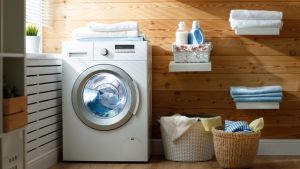
Who sells washer dryer machines?
Despite their obvious benefits, washer dryer combos are still not as popular as stand-alone machines. However, there are still quite a few options for consumers to choose between. Here’s a guide to some of the brands available. Hit the links below to check current prices.
Fisher & Paykel 8.5kg Front Load Washing Machine & 5kg Dryer Combo: $2669
Designed to care for every type of fabric with specialised cycles. Offers low-temperature drying to prevent fabric damage and a reverse-tumble drying action to minimise tangling.
- Dimensions: 850mm x 600mm x 640mm
- SmartDrive Technology
- 10 wash-only cycles & 9 dry-only cycles
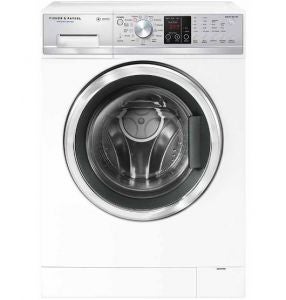
Panasonic 8.5kg/6kg Washer & Condenser Dryer Comb: $2299
Panasonic’s front loader washer dryer combo uses premium allergen and stain removal technologies.
- Dimensions: 845mm x 596m x 600mm
- 6kg condenser drying capacity
- StainMaster+
- ActiveFoam
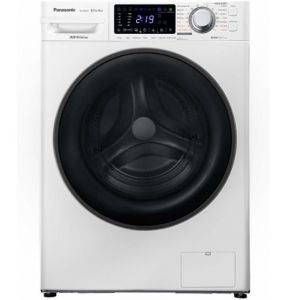
Electrolux 7.5kg/4.5kg Front Loading Washer/Dryer $2,298
This washer dryer features JetWash technology, Woolmark Blue certification (wash) and vapour refresh options.
- Gentle drum
- Extra-large door opening
- Add clothes
- Save your favourite program
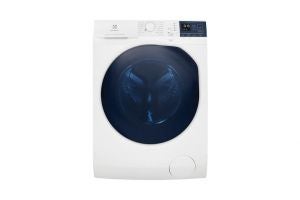
Features you should look for in washer dryers
The cheapest models don’t have many extra features. But the higher the price, the more features and modes. Some of the best features you should look for are:
Washer features:
- Hand wash: this mode simulates hand washing, which is perfect for delicate fabrics and undergarments
- Stain removal: this is more of a pre-wash cycle, and greatly improves your chances of removing stains
- Sanitation cycle: this setting removes allergens and bacteria during the cleaning cycle
- Custom settings: you can set your most used settings as favourites for easy access
- Temperature settings: adjusts hot and cold water as it enters the machine
Dryer features:
- Moisture sensor: this tells you how damp your clothes are, and will adjust the drying time accordingly. This can save you money and will also prevent over-drying
- Noise dampening: more expensive models come with this feature, which silences the annoying racket they always make
- Reverse tumbling: the drum reverses the spin direction from time to time, which minimises tangling of clothes and gives better drying results
- Extended tumbling: the cycle will run for a few more tumbles to help release excess wrinkling from your clothes. This doesn’t negate the need for an iron, however
Other useful features you should look for are digital and LED displays, wi-fi compatibility and, of course, a high energy star rating.
How to save money on washing
If you’re stuck with a combo machine with poor energy saving capabilities, don’t fret! There are some steps you can take to save as much as you can:
- Use a higher spin cycle: the faster you spin clothes in the washer, the less time they’ll need in the washer, saving on energy costs
- Clean the lint filters regularly: blocked filters make it harder for the dryer to circulate air through your clothes, which along with being less efficient, is also a fire hazard
- Wait until you have a full load: why do two separate loads when you could easily fit all of those clothes into one?
- Use nature: sunlight doesn’t cost a cent, so use it as much as possible! Only use your dryer if you need to dry clothes in a hurry, or if the weather is poor.
Stick to these tips as much as possible, and you’ll find that the cents will add up over time!
Pros and cons of different types of dryers
There are several different types of dryers to choose from if you’re not settled on a washer dryer combo. We’ve compiled a summary of the pros and cons of each of them, to give you a better idea.
| Pros | Cons | |
|---|---|---|
| Washer dryer combos | Costs about the same as buying the two machines separately· Convenient for those living in small homes
Convenience of drying your clothes in the machine you wash them in
|
Reduced drying capacity, may require multiple drying cycles
Can take longer to dry clothes than standard dryers May have higher energy use over time, costing you more money
|
| Electric dryers | Are cheaper and easier to install
Do not require a gas line Often don’t need to be vented to the outside |
Are more expensive over time
They are generally slower to heat up and take more time to warm your clothes
|
| Gas dryers | Less expensive upkeep, but this can depend on the cost of gas vs. electricity
They heat up clothes faster than electric dryers They warm up faster Are gentle on fabrics and are more energy efficient |
All gas dryers require a vent to the outside
They also require a dedicated gas line Require professional installation Are more expensive up front |
| Heat pump dryers | Extremely energy efficient
Quicker than standard dryers Your laundry won’t get filled with steam and moisture due to heat pump technology |
Significantly higher purchase price
Can be louder than other types of dryers |
The bottom line on washer dryer combos
As it eliminates the need to buy and find space for two separate appliances, a washer dryer combo could be a great investment if you live in a small apartment or house. Even if this doesn’t apply to you, there are certain models out there that are suitable for those living in large homes with big families, too.
They are more expensive than a standard washer or dryer, but you might find that most washer dryers are better value than buying the two machines individually. If you factor in their price, along with their high levels of convenience, as well as their decent energy efficiency, washer dryer machines are – at least on paper – a great option.
But you’ll have to ask yourself why they are not more popular than they currently are. Is it simply that most Kiwis just don’t feel the need to combine their laundry appliances into one? Or does doing so mean that these machines are simply a jack of all trades, but master of none?
Enjoy reading this article?
Sign up to receive more news like this straight to your inbox.
By subscribing you agree to the Canstar Privacy Policy

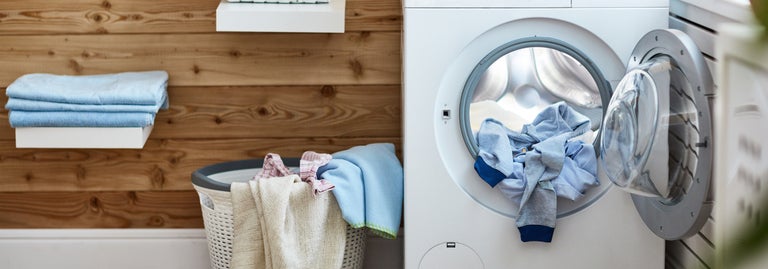
Share this article